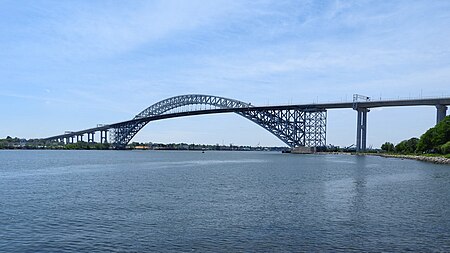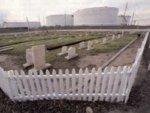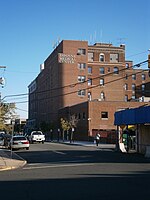Bayonne, New Jersey

Bayonne (pronounced "bay-OWN") is a city in Hudson County, New Jersey, United States. Located in the Gateway Region, Bayonne is situated on a peninsula located between Newark Bay to the west, the Kill Van Kull to the south, and New York Bay to the east. As of the 2020 United States census, the city's population was 71,686.Bayonne was originally formed as a township on April 1, 1861, from portions of Bergen Township. Bayonne was reincorporated as a city by an act of the New Jersey Legislature on March 10, 1869, replacing Bayonne Township, subject to the results of a referendum held nine days later. At the time it was formed, Bayonne included the communities of Bergen Point, Constable Hook, Centreville, Pamrapo and Saltersville.While somewhat diminished, traditional manufacturing, distribution, and maritime activities remain a driving force of the economy of the city. A portion of the Port of New York and New Jersey is located there, as is the Cape Liberty Cruise Port.
Excerpt from the Wikipedia article Bayonne, New Jersey (License: CC BY-SA 3.0, Authors, Images).Bayonne, New Jersey
Packard Street,
Geographical coordinates (GPS) Address Nearby Places Show on map
Geographical coordinates (GPS)
| Latitude | Longitude |
|---|---|
| N 40.66253 ° | E -74.110192 ° |
Address
Packard Street
Packard Street
07002
New Jersey, United States
Open on Google Maps










